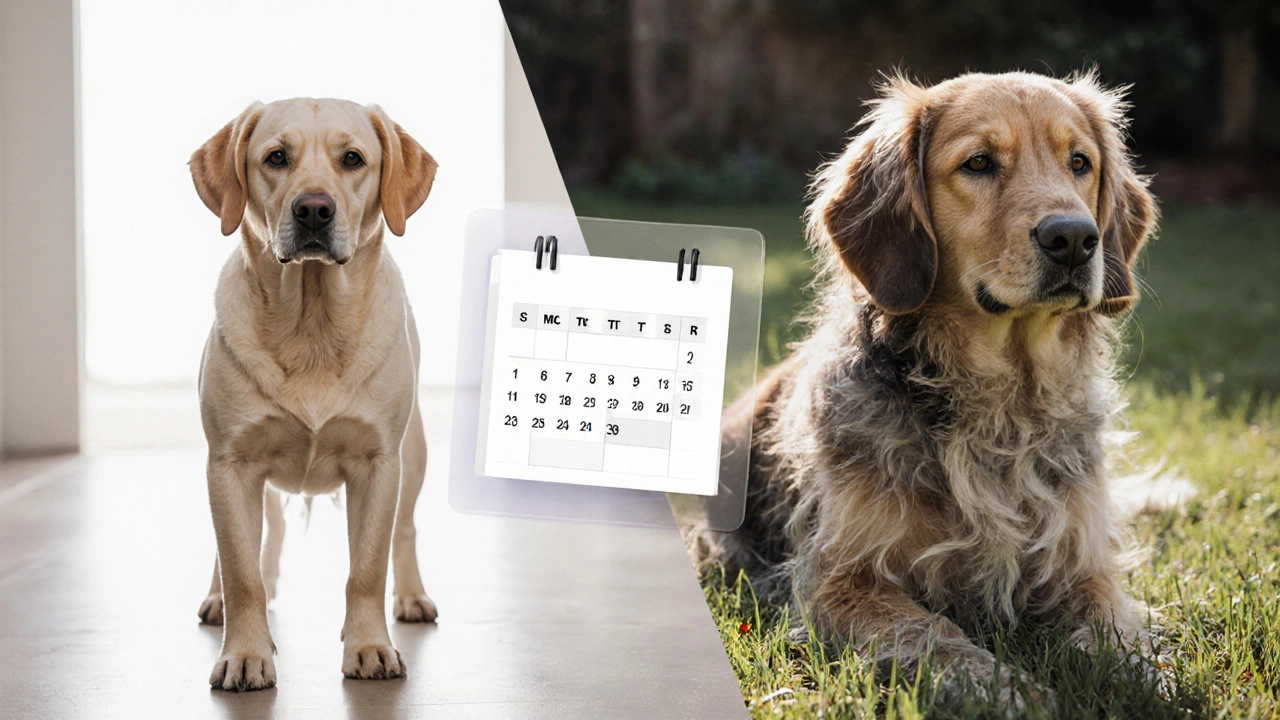How Often to Groom a Dog – Master Your Dog's Grooming Schedule
When planning dog grooming frequency, the regular interval at which you brush, bathe, and trim your dog's coat. Also known as grooming schedule, it helps keep skin healthy, fur shiny, and stress low. Understanding this routine involves dog coat type, the texture and length of a dog's fur, such as double, wiry, or short, choosing the right grooming tools, brushes, combs, clippers, and shampoos designed for specific coats, and sometimes using calming aids, pheromone sprays or treats that reduce anxiety during grooming sessions. These elements together shape a schedule that fits your dog's unique needs.
Breed and Coat Shape the Ideal Interval
Different breeds shed at different rates, so a Labrador Retriever with a double coat may need a thorough brush twice a week, while a short‑haired Beagle often gets away with once‑every‑ten‑days. Hairless breeds, like the Chinese Crested, hardly need a brush but still benefit from regular skin checks. Recognizing your dog's breed‑specific coat characteristics lets you set an evidence‑based routine rather than guessing.
Activity level also matters. Dogs that romp in forests or swim often collect mud, algae, and debris, demanding more frequent baths. Conversely, a couch‑potato poodle that rarely gets dirty may only need a bath once a month but still requires daily brushing to prevent matting. Weather plays a role too: rainy seasons can turn a light coat into a soggy mess, prompting extra clean‑ups.
Choosing the right grooming tools amplifies the effectiveness of your schedule. A slicker brush works wonders on dense undercoats, while a pin brush smooths longer, softer fur. For wiry breeds, a stripping knife keeps texture intact without over‑trimming. Pairing the tool with the coat type prevents skin irritation and makes each session quicker, which in turn reduces the dog's anxiety.
Stress signals during grooming are easy to miss if you’re not paying attention. Tucked‑away ears, rapid panting, or a sudden refusal to stand are red flags that your dog is uncomfortable. In those cases, calming aids like a dab of lavender‑scented spray or a chewable anxiety treat can make a big difference. Many groomers also use low‑noise clippers to keep the experience serene.
Professional groomers often follow a standard schedule: weekly brush‑outs for long‑haired dogs, bi‑weekly baths for medium coats, and monthly trims for short coats. However, home grooming gives you flexibility to adjust based on real‑time observations. If you notice your dog’s coat is getting oily sooner, move up the next bath by a few days. If matting appears, add an extra brush session before it becomes a full‑blown problem.
Watch for signs that your current frequency is off. Excessive shedding, a greasy sheen, or itchy skin suggest you’re grooming too infrequently. Over‑bathing can strip natural oils, leading to dry, flaky skin. The sweet spot lies where the coat looks healthy, the dog enjoys the process, and you aren’t spending hours on maintenance.
Below you’ll find a curated set of articles that dive deeper into each of these aspects—from calming aids used by groomers to how many dogs a professional can handle in a day. Use them as a toolbox to fine‑tune your dog’s grooming routine, keep your pup looking great, and make every brushstroke a bonding moment.
How Often Should You Groom Your Dog Each Year?
Learn the ideal number of grooming sessions per year for any dog breed, factors that affect frequency, and how to create a practical grooming calendar.
